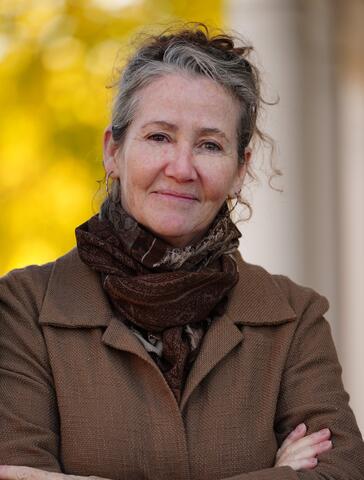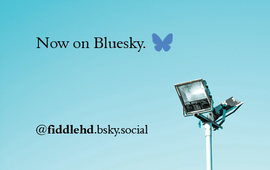
Editorial Assistant Yogesh Tak's Interview with 2024 Fiction Prize Winner Luanne Gauvreau whose story "Roses for Bodies" was published in Issue 302 (Winter 2025)
Photo credit: Michel Dupuis
Yogesh Tak: I was struck by how the story tackles serious artistic questions in the midst of major political and humanitarian circumstances. Twice in the story, and very significantly, Max questions his “aestheticizing” the plight of the people, unable to not see beauty in everything. Do you think Max could paint the scene at the sea without the risk of appropriation? Or can it be considered lending a voice, shedding light on some of the most pressing matters in the world?
Luanne Gauvreau: When I began the story, I imagined that Max would return to his practice to create a watery “Guernica” for our times, but as I wrote, I came to think that he would not paint what he has seen. He will continue to paint only the sea, but his understanding of the nature of the sea has changed and I have no doubt that his paintings will also be significantly changed. He will probably begin a different “period”, as they say of artists.
Some might question the ethics of enriching his fairly abstracted paintings of the sea with what he has experienced at the migrant landing. Exactly that sort of concern is what had immobilized Max on first seeing the migrant camps. But what on earth else is art for if we cannot engage deeply with the suffering of others and have it act on us and through our art?
During the long day within this story, Max has seen modeled many other actions that can support migrants in his community and he has considered practical ways to contribute to those actions. There’s lots to be done now that he’s come unstuck.
TK: This story reminded me of a novel I read recently about refugees: What Strange Paradise by Omar El Akkad. In this novel and similar works, we look at the migrants from either the narrator as a third person or a first person. I was intrigued by your choice to rather have the protagonist look at the people arriving and his complicated desire to help. What are your thoughts on the lens with which we view a situation in a story, and to what extent did it influence your choice in Max as a protagonist?
LG: The migrant crisis has been addressed by some excellent writers— Jenny Erpenbeck, Steven Heighton and Donal Ryan come to mind, as well as El Akkad—helping us to understand the situations that spur migration, as well as the atrocity of the dangers forced on migrants by war, greed and negligence. These writers are working in a tradition of realism—since Dickens or Zola—that has fostered so much compassion in readers.
So that’s the first step—empathy for the other. The artist goes out into the world (in real life or through research) and reports back; that reporting moves us. We are moved and then what? That’s where this particular story sits, with the reader of such stories. As an artist, it is Max’s vocation to look; what he sees is demanding a response from him, but he can’t discern what that response should be.
I too am struggling, by writing this story, with the effect of all my reading, and with the barrage of need that confronts us in our daily newsfeeds. I hope we can have compassion for ourselves as we struggle to decide on our own best responses.
TK: A painting can and does speak various things to different people. Max thinks that it is a failure if the meaning is clear in a painting and labels it as propaganda. How much of it do you think applies to fiction, if at all?
LG: Most art—paintings, or even protest songs—won’t change anyone’s mind. Its value is to shore up the resolve of those in alignment, to give language and light to thoughts we recognize among our own, to let us know we’re not alone in those thoughts. This sort of art is suggestive and energizing.
Fiction is an exception. Those realist novels I mentioned earlier have been proven to create change. Psychology experiments show that people behave more compassionately after reading a short story; experiencing a character’s point of view opens readers up to similar empathy in real life. I think this is the miracle of narrative.
In writing the visual that Max chastises himself for imagining, I am using my best descriptive and poetic writing, but if I used that imagery alone, without investigating it within a narrative, I would chastise myself just as Max does.
YT: You write about Pier Paolo Pasolini; of course, Max is an artist himself, and ekphrasis can be a powerful, moving tool for many a writer to be inspired. Was there a particular painting that inspired this story (other than the instance when Max sees Roses for Bodies on the banner)?
LG: I have a strong memory of an editorial cartoon I once saw—unfortunately, I can’t remember who drew it—of many, many bodies sinking gently through the Mediterranean waters. It was drawn simply—sweet little cartoon people floating down into the depths. So affecting. The job of editorial cartoons, of course, is to make a clear visual comment on the headlines—very different from Max’s fine art seascapes. But there’s room in this world for both.
YT: The writing is beautiful throughout; especially, toward the end, the prose is gorgeous. Max’s reflection after having saved “his” family; the painting of the sea, sunset, and horizon in the context of his current reality, art, and volunteering really moved me. It reminded me of Schindler’s List when he says he could save more people… It also reminded me of Ripley when a character says that it’s always the light in Caravaggio paintings. Are there artistic mediums other than paintings that inspired you to write this story, if any, or spark creativity for your other works?
LG: Thanks for your kind words. I’m so pleased that you were stirred to make connections to other media. It’s certainly what Max was doing as he browsed the bookstore thinking of Pasolini. While Pasolini did some painting (he seems to have done everything), it’s his work as a film director and as a cultural and political writer that affects Max most strongly and finally propels him into action.
It’s common to discuss the writers that influence our writing—and the sedimentary effect on us of everything we’ve read—but I’m sure my writing is equally affected by other arts. I feel a strong continuum from writing to film or theatre, from there to dance or visual art. And probably the most interesting passages of writing happen when we reach for elements that are more natural to the other arts, like colour, light, or gesture.
I’ve seen some extraordinarily theatrical dance performances that have really fed my creative mind, stuff by Pina Bausch, Margie Gillis or Hofesh Shechter. I think very often of Crystal Pite’s Revisor, in which she repeats a scene of dance-theatre, deconstructing it from narrative to movement—revising it. I suspect it all fascinates me because it is so very different from these little black marks on paper.
Thank you for such thoughtful questions!
Luanne Gauvreau lives in Ottawa where she is a writer and editor, in body and spirit. “Roses for Bodies” is drawn from a novel in progress exploring the nature of work and art in a world so in need of real action.
Read and excerpt of "Roses for Bodies"









